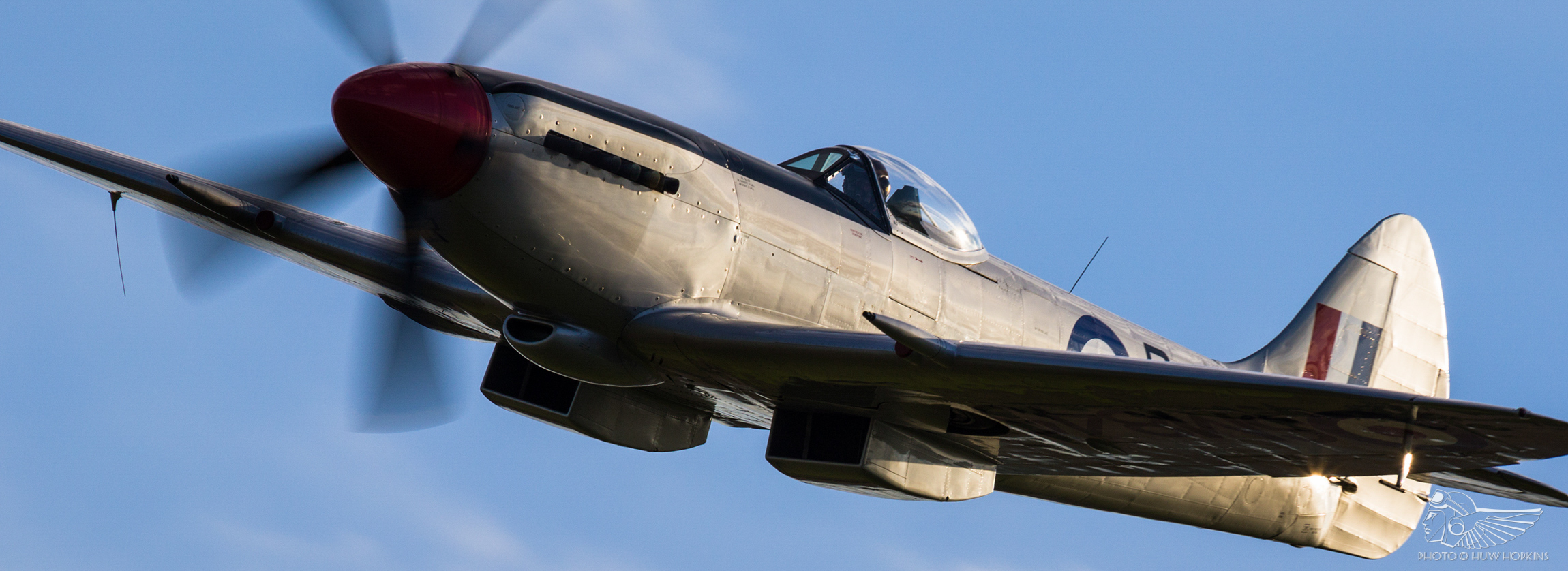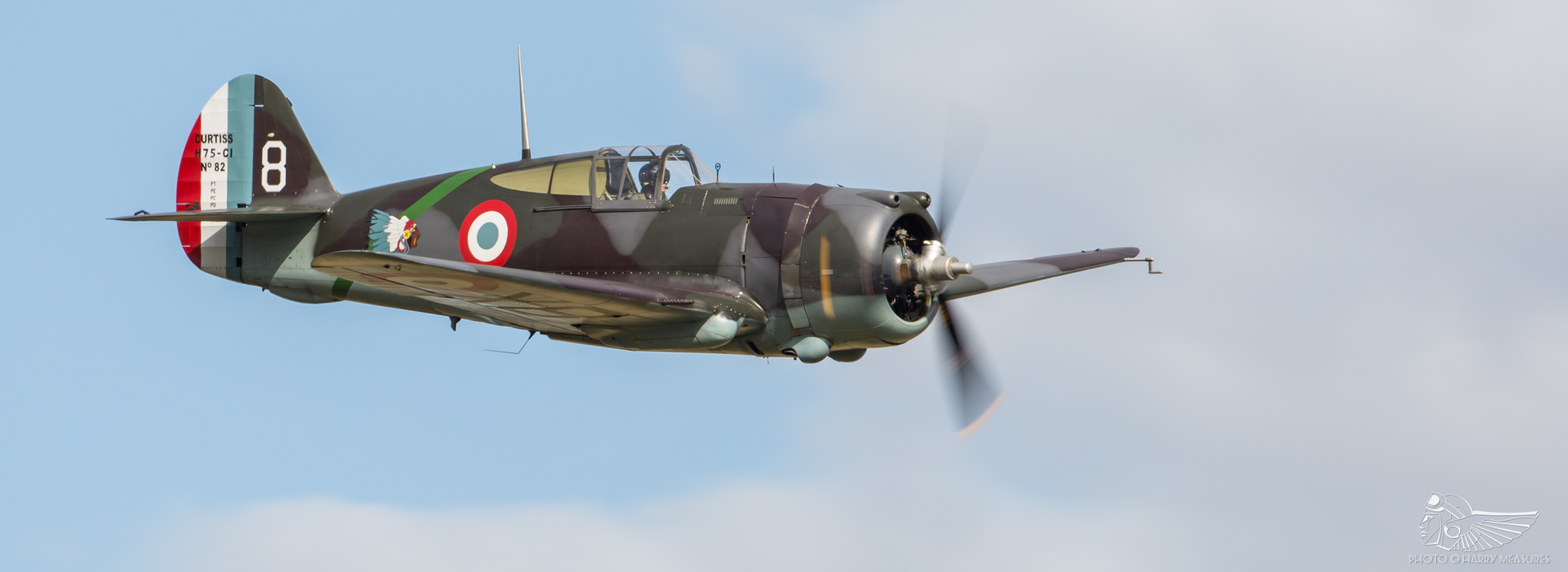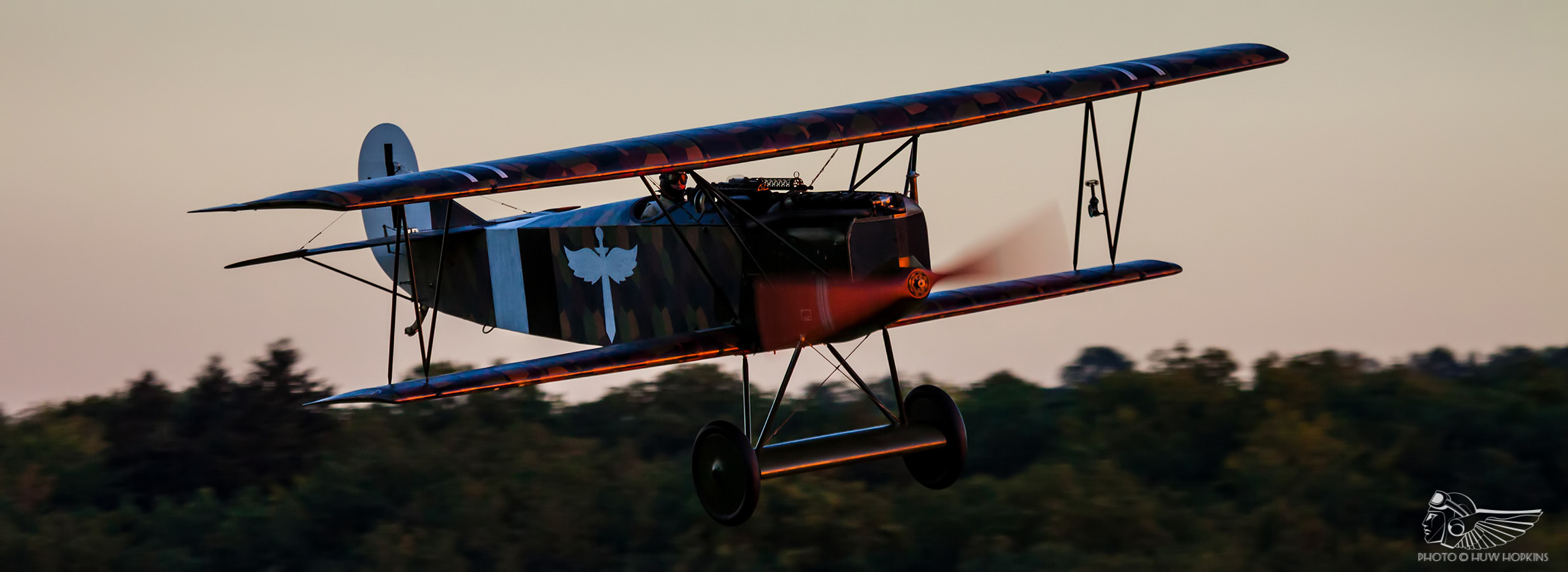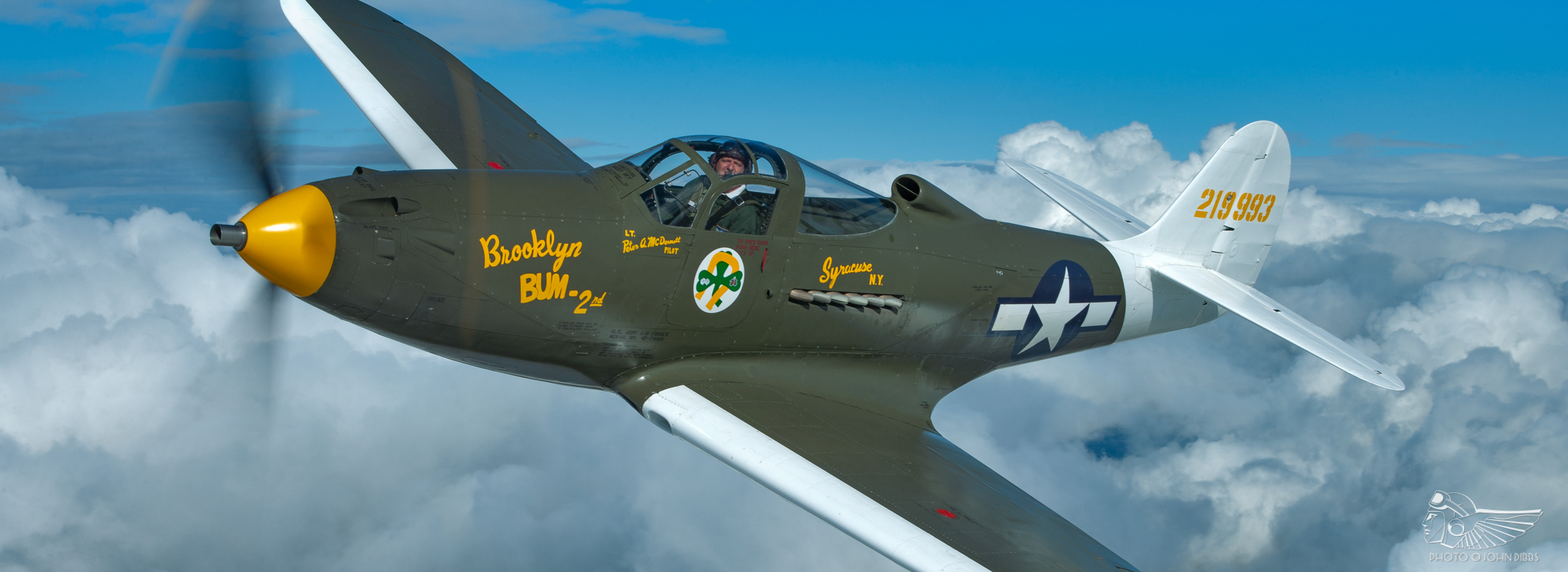“Enthusiasts fear many of our most magnificent flying machines are dipping over the horizon to sunnier climes and into the hands of rich foreign owners, at an alarming rate,” claims James Murray in his Daily Express Save our Spitfires! article of 13 February 2021.
The catalyst for the article is the Historic Aircraft Association’s (HAA) campaign to give British-owned historic aircraft ‘National Treasure’ status with a multi-tiered protected register that would aim to keep them flying in the UK and prevent their sale overseas. “Britain is losing irreplaceable, historically-important aircraft to overseas collectors and museums as owners and pilots give up the battle to keep their treasured machines airborne due to the increasing demands of burdensome regulations”, wrote the HAA in its January 2021 press release. “Eighty years ago aircraft such as the iconic Spitfire and Hurricane saved the nation from Nazi tyranny – now these irreplaceable aircraft need the nation to save them from overseas buyers waiting to swoop as owners and pilots tire of fighting over-zealous regulators.”
It continues, “Notable aircraft that moved abroad in recent years are Spitfire XVI TB885 to Holland, P51D [sic] ‘Ferocious Frankie’ owned previously by the Old Flying Machine Co and now resident in Turkey. An Hispano Aviación HA-1109 [sic] – the Spanish Messerschmitt 109 fighter, has left the UK to Hungary recently. There are two more UK based Spitfires that are leaving the UK to go abroad but due to client confidentiality details on these sales are not in the public domain.”
To mitigate against such departures, HAA proposes to draw up a “‘watchlist’ [sic] of the Top 10 aircraft which should be given ‘National Treasure’ status” based on their social relevance, uniqueness and historical value, amongst them the Battle of Britain Memorial Flight’s Lancaster, the Shuttleworth Collection’s Blériot XI, the Historic Aircraft Collection’s Hawker Fury Mk I and Navy Wings’ Fairey Swordfish.
A second tier of ‘Blue Plaque’ aircraft would seek to protect aircraft of “significant historical importance”, whilst others would be grouped under further subtly different sub-categories as ‘Significant’, ‘Noteworthy’ and ‘Important’, the latter groupings including types such as P-40s, P-51s, P-47, “Yaks” and Buchóns.
Though the watchlist includes numerous civilian aircraft, much of the focus is on the ex-military scene, identifying “at least 30 eligible Spitfires and ten Hurricanes” and a raft of others classically referred to as warbirds. The press release cites the aforementioned aircraft that have, as the Daily Express put it, fallen “into the hands of rich foreign owners”, and states that Seafire LF III PP972 is attracting interest from American buyers.
On the contrary, these examples offer fine case studies of historic aeroplanes that have benefitted from the healthy international movement of warbirds. It’s ever been thus; from its formative days, restorations, trades and sales have been the lifeblood of the historic aircraft preservation scene. At its zenith, the reasonably high turnover of aeroplanes amongst British private operators brought about the golden era of the warbird preservation boom period. We remember the Old Flying Machine Company and The Fighter Collection’s heydays with fondness, but shouldn’t forget the countless airframes that passed through each company’s doors from the early ’80s and how many of these drove the restoration and rebuild of others. Without such fluidity, the industry would surely stagnate.
Clearly, historic aircraft operators and airshow organisers have been placed under tremendous strain over the last half-decade, the one-two punch of changes to airshow regulations and the pandemic casting a pall over the industry. Quite how the ‘watch list’ fits into this and would offer practical solutions for operators needing or wanting to sell their aircraft is less certain.
Turning to the Buchóns, ‘White 5’ and ‘Yellow 7’ were part of the cache of Battle of Britain film star aircraft stored at ‘Connie’ Edwards’ Big Spring ranch in Texas. Bought by Swiss-based Boschung Global, the aircraft were imported to the UK for restoration to flight by Air Leasing at Sywell. ‘Yellow 7’ has followed a particularly convoluted path that epitomises the international scope of the historic aircraft preservation industry – an ex-Spanish Air Force airframe bought from an American collector by a Swiss owner, restored by a UK workshop for an Australian investor and then sold to a private operator in Germany.
‘White 5’ followed a similar trajectory and is now with a private operator in Hungary – an exciting prospect for aviation enthusiasts in eastern and central Europe. The Buchón restorations engendered numerous multi-aircraft sequences in the UK and France, culminating in what was likely a one-off five-ship display at Flying Legends 2019; sights British crowds would have been denied if not for the involvement of “rich foreign owners” facilitating their restorations.
Spitfire Mk XVI TB885 is a curious example as it was restored by Biggin Hill Heritage Hangar for Dutch owner Frits van Eerd, making its maiden post-restoration flight in summer 2018. The aeroplane made public appearances at Biggin Hill’s Festival of Flight before heading to its new home in the Netherlands and has since returned to the UK for another Biggin airshow. Seafire LF III PP972 was privately owned in France when it was bought and moved to the UK. Here its restoration was completed by Air Leasing, and for a few years we had the pleasure of this unique airworthy example of the Seafire LF III flying at British airshows before its current owner parked it and put it up for sale. If there is interest from the USA as claimed, it begs the question of why the aircraft shouldn’t be sold to a US owner who may have the desire and resources to fly it? And if not, is languishing out of sight at a private airfield in the UK a better outcome?
Mustang Ferocious Frankie was an American aircraft imported by Stephen Grey decades ago. Sold on and operated by Ray Hanna’s Old Flying Machine Company from 1999, it flew under that banner for more than 15 years. From 2016, it was largely inactive and sat dormant in Duxford’s Hangar 3 until it was sold to well-known Turkish aviator Ali Ozturk and flown to his base at the M.S.Ö. Air and Space Museum in Turkey in early 2018. Some of the true aviation greats flew Moose/Ferocious Frankie during its tenure with TFC and OFMC – men like Stephen Grey, Steve Hinton, the Hannas and Hoof Proudfoot and others of their ilk – and it played a key role in major film productions.
It now enjoys a very active life, taking a starring role at Turkish airshows and bolstering the country’s fledgling historic scene (which is itself reliant on Ozturk’s purchase of numerous vintage aircraft from Europe, including the ex-Breitling DC-3). Again, are we to decry its sale to an overseas buyer who has the money, resources and enthusiasm to operate such a warbird? Regardless, how would an industry ‘watch list’ practically protect such an aircraft from being sold abroad in these circumstances?
Similarly, Spitfire FR XVIII SM845 was restored by Historic Flying Ltd in the UK and became a regular fixture at British airshows from 2000 before Biltema Ltd exported it to Sweden. It was back a little while later for Flying Legends 2009 – it’s often been the case that warbirds sold to the continent have made their way to the UK for events – and returned to the UK for restoration after it was involved in a fatal incident in Norway. A second restoration by Historic Flying returned SM845 to flight in 2013, and it enjoyed a very busy life with custodian Richard Lake before it was sold on to a new owner in Germany last year.
Keeping an historic aircraft in the UK isn’t a guarantee of continued operation and airworthiness. Indeed, the fates of Meteor T7 WA591 and Meteor NF11 WM167 offer a stark contrast. The former was restored in the UK and flew here for several years until it was put up for sale in 2015. A UK buyer wasn’t forthcoming, and in 2017 it was acquired by Marty Tibbits’ World Heritage Air Museum in America. Following Tibbits’ sad death, WA591 was donated to the Planes of Fame Air Museum at Chino, California – a fine home amongst a large fleet of very active airworthy warbirds and classic jets, where it will doubtless become a popular and well looked-after fixture. Its sale to the ‘States was lamented by British enthusiasts, aggrieved by the perceived loss of British heritage.
By contrast, the Meteor NF11 was grounded and passed to the Classic British Jets Collection at Bruntingthorpe, where it arrived in early January 2019. That airfield is now in crisis and the Meteor’s future as a ground-running airframe is in doubt. It remains UK-based for now, but its fate is far from assured, it can no longer be seen by spectators at public events, and it isn’t flying. Of the two Meteors, it is objectively worse off than its former stablemate despite having stayed in the UK.
In recent years we’ve seen private owners funding the restoration and purchase of countless rare and unique types, amongst them BE2e, Albatros DVa and Snipe from New Zealand, P-36C, P-40C and P-47 from America, and Spitfires from Australia and America. Notably, some of the aircraft cited for inclusion on the ‘watch list’ were themselves imports and have little or no provenance to the UK. Take P-47 Thunderbolt Nellie B, for example, which joined The Fighter Collection from the USA and flew as No Guts, No Glory for decades. It was sold abroad in 2006 and flew in the USA until it was bought by Graham Peacock and imported to the UK a second time. Since 2018, Nellie B has once again been pleasing crowds across the continent.
Peacock’s fleet, meanwhile, includes Hawker Fury ‘SR661’ – another British warbird that was exported and eventually made its way back here. The Fury was rarely seen in the latter years of former owner John Bradshaw’s custodianship. Its sale to Dave Warburton in Australia set in motion events that not only kept the aircraft active in the southern hemisphere, but put it on a path that has seen it returned to the UK and given a whole new lease of life as ‘SR661’. Similarly, its stablemate TF-51D Mustang Contrary Mary was flown across the Atlantic Ocean in 2007 (in its previous guise of Miss Velma) to join The Fighter Collection, whilst both share a hangar with Spitfire RN201 (another aircraft restored in the UK, imported more recently from Tom Blair’s fleet in the USA) and Spitfire MH415 (imported from Australia).
Equally, what of The Fighter Collection’s wonderful Curtiss Hawk 75 – originally operated by the French Air Force in the Battle of France, this American-built aircraft was restored in the USA for Stephen Grey. Its heritage lies with America or France, and any connection to the UK is tenuous at best. The same could be said of myriad aircraft that have come and gone over the years – Corsair, Wildcat, Hellcat, Bearcat, Tigercat, P-39, P-40 and La-9 in their number – whose provenance lies abroad. British and European enthusiasts enjoyed them thanks to the efforts of generous owners, dedicated workshops and uniquely skilled engineers, and so too must we accept their eventual departures; as privately-owned assets, neither they nor aircraft with British heritage ‘belong’ in any country.
Such is the fundamental truth of the historic aircraft industry – the sale and trade of vintage aircraft between private owners enables the global vintage scene to thrive. It periodically refreshes the field and funds other restoration projects to fruition. It was the case in the days of Doug Arnold, and so it is today. State or charity-owned aircraft are a different matter, but any proposal that imposes limitations or obligations on the ownership or sale of assets belonging to individuals and consortiums risks undermining the fabric of the industry itself, the ramifications of which could be counterproductive to the restoration and preservation of the very types the scheme would purportedly save.
![]()














